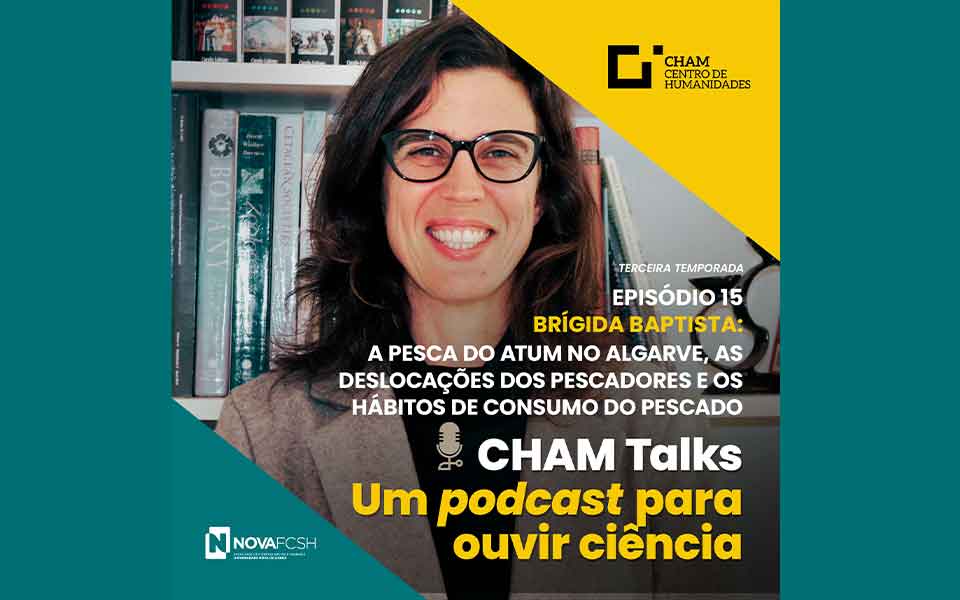
Tuna Fishing in the Algarve, Fishermen’s Movements and Fish Consumption Habits
Tuna can grow up to three metres long, yet we usually picture it only inside a tin. Brígida Baptista talks about the different species; the spawning routes in the Atlantic and the Mediterranean; the traditional and contemporary tuna‑fishing techniques used in the Algarve; the ways the fish is eaten — in barrels, preserved or fresh — and the pricing on international markets; and the impact this activity has on various communities across southern Portugal.
Brígida Baptista is a integrated researcher at CHAM – Centre for the Humanities. She holds a BA and an MA in Archaeology and a postgraduate diploma in Nautical and Underwater Archaeology. She is an associate researcher on the ERC Synergy Grant project “4Oceans: The Human History of Marine Life” at NOVA University of Lisbon. She’s currently preparing her PhD in Environmental History, focusing on tuna‑fish trap installations in the Algarve during the Early Modern period. Brígida founded and chairs Lais de Guia – Cultural Association for Maritime Heritage. She is also principal investigator for the Municipality of Tavira’s project «Roteiros de Pesca de Santa Luzia – Rota do Polvo e Rota do Atum» and author of Histórias da Armação do Barril, Rostos da pesca do atum.
The interview is conducted by Isabel Araújo Branco
Coordenation
Isabel Araújo Branco (CHAM)
Organization
CHAM / NOVA FCSH







